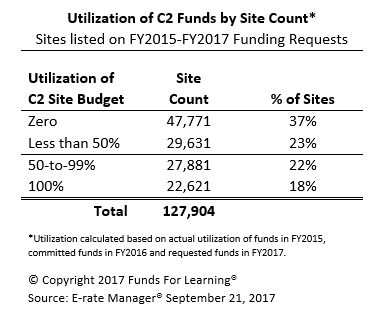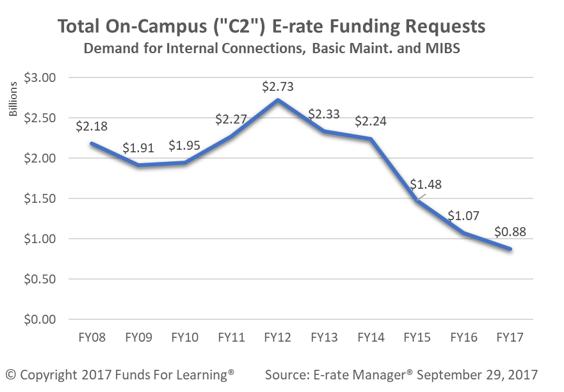I recently joined a delegation of entrepreneurs who visited the United Nations. We were there discussing the support that businesses can provide towards achieving the U.N.’s Sustainable Development Goals, goals that center on basic human needs, such as food, healthcare and education.

I was excited to participate in the event and I am hopeful that many good things will come out of it. One immediate consequence for me was a reminder of how important it is to keep striving to improve lives. Even where there has been progress, there is always more work to be done.
###
Which brings me to the topic of this week’s commentary: the need to further improve the E-rate program. On September 22, 2017, the FCC issued a request for comments on Category Two spending, the so-called “internal connections” projects that bring Wi-Fi into classrooms and library facilities. This is an encouraging step. Chairman Pai has stated in the past that the E-rate program is worth fighting for. This action shows that he is serious about working to improve broadband Internet access in schools and libraries.
That is not to say that there has not been progress in the past. In recent years, the annual funding cap was increased to about $4 billion and steps were taken to ensure that every applicant could receive support for on-campus Wi-Fi. This has resulted in many positive outcomes, such as the 42,000+ sites that received Wi-Fi support in FY2015. Credit is due to the prior FCC administration for the steps they took to enhance the E-rate program.
And there is more work to be done.
Currently, more than a third (37%) of participating sites have not touched their Category Two (“C2”) budgets, and another quarter (23%) have used less than half of their budgets. Only a relatively small percentage of sites (18%) have maxed out their C2 discounts. Why is that?

Given the robust demand for Wi-Fi in schools and libraries, it is a curious fact that the requests for C2 funding have declined for five years in a row. At a time when schools and libraries are working feverishly to get their students and patrons connected, the aggregate demand for on-campus networking reported via the E-rate program is waning.

Is this because all the connectivity work is done? Hardly. The dip in demand for Wi-Fi does not reflect the real world needs of schools and libraries, at least the ones that I work with. This apparent reduction in demand is much more likely to be an indication of the E-rate program’s complex rules, application process and administrative hurdles.
###
The improvements of the past and the need to make future improvements are not mutually exclusive. Even where there has been progress, there is always more work to be done.
We can acknowledge the achievements of prior FCC leadership while addressing new challenges and pushing the E-rate forward into the future. Today, is the E-rate helping to connect more people at faster speeds to the Internet than ever before? Yes. Today, could the program operate more effectively and serve its constituents even better than before? Progress? Yes! More to do? Yes!
Often in Washington, DC, it seems like everything is cast in terms of all or nothing. For example, the debate on health care. One side says the health care system is perfect and needs no adjustment; the other side says the entire system is malfunctioning; and neither side seems willing to acknowledge the truth that exists on both sides of the debate.
But the FCC does not have to function this way. That is why I am encouraged that Chairman Pai’s administration is asking questions about E-rate Category Two funding requests. It indicates that the current FCC is aware that there is room for future improvement. Not everything is bad AND more can be done to improve the program – and, with this improvement, the E-rate program can better support Internet connectivity for students and library patrons.
Even where there has been progress, there is always more work to be done.
